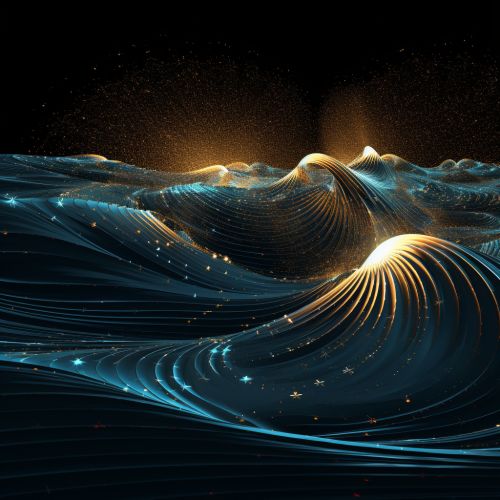Quantum Interference
Introduction
Quantum interference is a fundamental phenomenon in the field of quantum mechanics. It describes the behavior of quantum particles when they overlap, resulting in a combined wave that can either increase or decrease in amplitude, depending on the phase difference between the particles.


Quantum Particles and Wave-Particle Duality
In quantum mechanics, particles such as electrons, photons, and atoms exhibit a property known as wave-particle duality. This means that they can behave both as particles and as waves. The wave-like behavior of these particles is described by a mathematical function known as a wavefunction. The wavefunction provides a probability distribution that describes where a particle is likely to be found upon measurement.
Principle of Superposition
The principle of superposition is a key concept in quantum mechanics and is closely related to quantum interference. According to this principle, any two (or more) quantum states can be added together, or "superposed," and the result will be another valid quantum state. Conversely, every quantum state can be represented as a sum of two or more other distinct states.
Interference of Quantum Particles
When two quantum particles overlap, their wavefunctions interfere with each other. This interference can be either constructive or destructive. In constructive interference, the two wavefunctions are in phase with each other, resulting in a combined wave with greater amplitude. In destructive interference, the wavefunctions are out of phase, resulting in a combined wave with lesser amplitude or even zero amplitude.
Double-Slit Experiment
The double-slit experiment is a classic demonstration of quantum interference and wave-particle duality. In this experiment, a beam of particles (such as light or electrons) is directed at a barrier with two slits. If the particles were behaving strictly as particles, one would expect to see two bands of impacts directly behind the slits. However, what is observed is an interference pattern of alternating light and dark bands, indicating that the particles are behaving as waves.
Quantum Interference in Quantum Computing
Quantum interference is a key principle in the field of quantum computing. Quantum computers use quantum bits, or qubits, which can exist in a superposition of states. By manipulating these states and allowing them to interfere with each other, quantum computers can process a vast number of possibilities simultaneously.
Conclusion
Quantum interference is a fundamental aspect of quantum mechanics, with implications for fields as diverse as computing, cryptography, and materials science. It underscores the wave-particle duality of quantum particles and challenges our everyday understanding of the physical world.
